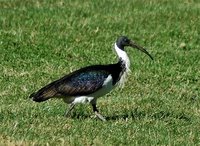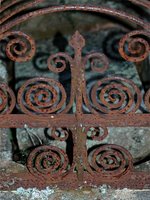 Well, the Prime Minister has put some of us out of some of our misery - maybe, possibly, but I doubt it.
Well, the Prime Minister has put some of us out of some of our misery - maybe, possibly, but I doubt it.Confused? Well, so am I.
John Howard has announced that he will stay on to fight the next election. This is entirely predictable, because it is the one thing which John Howard really likes doing - beating Kim Beazley.
"Flubber" has completely managed to rub off even the "rusted on" traditional supporters of the Labor Party. First there was the shameful failure to stand on principle, regarding the Tampa refugees. And then, last week there was the double-backflip, when he decided to endorse Uranium mining. And so, he has destroyed the basic constituency of his support. How could Howard resist?
 Besides, it is apparent that Howard has little concept of how to stabilise the economy, or the "mood of the nation" regarding Industrial Relations. And as for Foreign Affairs .......with troops in Iraq and Afghanistan, and who knows, Lebanon tomorrow, not to mention East Timor, and other places which I cannot now recall - our Defence and Foreign Policy is a complete basket case. Even the politics of water is now out of control.
Besides, it is apparent that Howard has little concept of how to stabilise the economy, or the "mood of the nation" regarding Industrial Relations. And as for Foreign Affairs .......with troops in Iraq and Afghanistan, and who knows, Lebanon tomorrow, not to mention East Timor, and other places which I cannot now recall - our Defence and Foreign Policy is a complete basket case. Even the politics of water is now out of control.However, if Howard now goes into Election Mode, then he can legitimately ignore all those issues, and just concentrate on criticising the Labor Party. How easy is that.
The fact that will create a giant distraction from the real issues of the state of rot of the country, will only be more attractive to Howard than having to do anything about those issues.
God Help us.















































